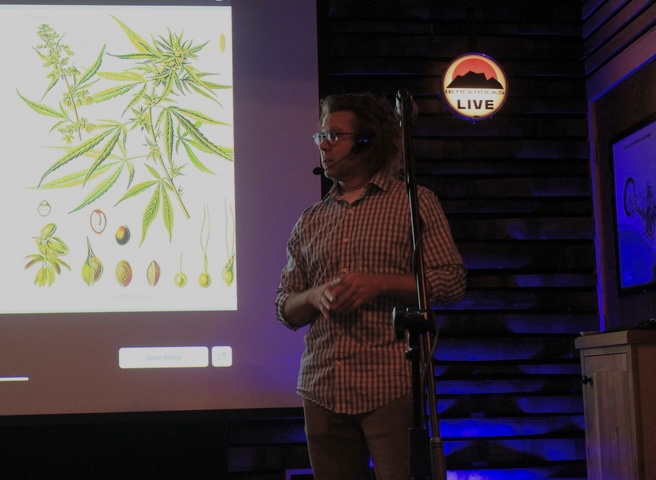Marijuana is a plant known for its psychoactive effects and has only recently been legalized in Michigan. As its popularity grows, many questions are posed — where did cannabis first come from, and what is the biology behind it?
People of Marquette were happy to congregate at Blackrocks Brewery on Tuesday, Oct. 10 for Northern Michigan University’s monthly “Science on Tap”, which is a presentation given on the second Thursday of each month about various educational topics. The program is sponsored by the Department of Biology and the Department of Earth, Environmental and Geographical Sciences (EEGS). For October, industrial hygienist Lex Koltowicz of TriMedia Environmental & Engineering Services threw together a last-minute but impressive presentation concerning the history, botany and complete biology behind cannabis.
Koltowicz began his speech by discussing the origins of hemp. While the location of where it evolved remains arguable, it is known to have traveled through Afghanistan, shipped from Portugal and utilized in regions such as Southeast Asia. Aside from this, he offered a brief genetic analysis of the plant and described the different variants from each region.
As one of the oldest cultivated crops, he explained, the anatomy of cannabis is important. Aside from it being used for oil and its psychoactive effects, its stems were broken, combed and spun for cord, cloth, paper and more. NMU students had plenty of questions following Koltowicz’s presentation.
Growth in the cannabis programs at Northern Michigan University seems promising, and students are becoming more interested in related degrees like medicinal plant chemistry. For them, this month’s “Science on Tap” was an opportunity to learn more about the subject, and even take advantage of the new information in their classes. This was the case for Cole Edgcombe, a third-year student taking NMU’s cannabis law course.
“I thought the genetics of the plant were super interesting, and I didn’t know it was so easy to clone marijuana plants,” Edgcombe said. “I also didn’t know that the main origins [of cannabis] had to do with the slave trade. Those were my two biggest takeaways.”
Edgcombe also recognized the importance of destigmatizing marijuana as it continues to be popularized in Michigan. On college campuses specifically, he believes that it is always important to educate students on subjects they may not have sought out otherwise.
“In a brave new world where we’re all around [cannabis] permanently, we need to get over the stigmas, which is why it’s beneficial to learn about it,” Edgcombe said. “Not to mention, we have a huge program here at NMU, and I like knowing what my fellow academics are up to. You want to know what you’re getting involved in, and what’s around you.”
Attending the monthly “Science on Tap” is a great way to learn new topics from local scientists, and this month’s marijuana presentation was considered a success. It introduced the newest research topics and debates regarding the use, anatomy and spread of cannabis. Students have the chance to educate themselves on similar topics next month and can learn more about upcoming events by visiting NMU’s Science on Tap page.



























